« Coming Soon: Reviews! | Home | Secret Stash Records »
Chillin with Brazilian: Bossa Nova
Post By: Alan
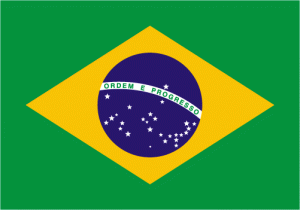 Lately, I have been captivated by a music with lush textures, relaxed melodies, and a fantastic sense of place. This music comes from a very unique part of the world with a vibrant musical history and amazing natural beauty. The Place is Brazil, and the music is Bossa Nova.
Lately, I have been captivated by a music with lush textures, relaxed melodies, and a fantastic sense of place. This music comes from a very unique part of the world with a vibrant musical history and amazing natural beauty. The Place is Brazil, and the music is Bossa Nova.
The name “Bossa Nova” roughly means “New Trend” in Portuguese. It came about in the later 1950’s in Rio de Janeiro, Brazil among the vibrant intellectual and artistic communities there during that time. Bossa Nova is influenced by both Samba music and Cool Jazz, and uses several instruments such as classical guitar, piano, and strings to create lush musical textures. The guitar is often used for rhythm, and the string arrangements have a very distinctive sound to them.
One important similarity between Bossa Nova and American Jazz is that both genres are based on the musical traditions of African people. While both genres developed their own styles, in their own part of the world, with their own people, it is fascinating to listen to American Jazz and Bossa Nova, and experience some of the similarities. Naturally, when Jazz musicians like Stan Getz traveled to Brazil and experienced this music, they wanted to work with some of these Brazilian musicians (Joao Gilberto, Antonio Carlos Jobim) and make new music together. The result of these musical partnerships are famously recorded on such albums as Getz/Gilberto and Jazz Samba.
Bossa Nova History and Key players
The two people most famous for the development of the Bossa Nova style in Brazil are Joao Gilberto and Antonio Carlos Jobim. Joao Gilberto is a guitarist, singer and songwriter, and much of his music uses this very stripped-down sound consisting of only guitars and vocals. Antonio Carlos Jobim is a pianist and composer, and has written some of the most famous Bossa Nova songs in history. While both Gilberto and Jobim were very active in creating the Bossa Nova style, they reached international fame when Stan Getz collaborated with them both to create the Getz/Gilberto albums. Featuring the famous “The Girl From Ipanema”, these albums created a worldwide sensation, and immediately put Bossa Nova on the map.
While Joao Gilberto, Antonio Carlos Jobim and Stan Getz are the three most well-known musicians that were part of the Bossa Nova scene, there were many other musicians who helped shape what Bossa Nova is and what it became.
Vinicius de Moraes was also an important figure in the development of Bossa Nova, as he worked with Jobim on the production of a play; Moraes wrote the words, Jobim wrote the music. Soon after, Elizete Cardoso was asked to sing on the album Canção do Amor Demais by Jobim and Moraes, which was one of the first Bossa Nova albums. This album also featured Joao Gilberto.
Another important figure in Bossa Nova was Joao Gilberto’s wife of the time, Astrud Gilberto whose vocals became famous on the Getz/Gilberto album song The Girl From Ipanema.
American Charlie Byrd collaborated with Stan Getz on the classic record Jazz Samba. This album was the beginning of the Bossa Nova craze in North America.
Lots of other musicians have been important to the Bossa Nova scene, both Brazilian and American. Even American legends like Frank Sinatra and Ella Fitzgerald got in to the Bossa Nova scene.
The Bossa Nova Sound
Bossa Nova has a very distinctive sound, and uses instruments in a very distinctive way. It is very jazzy (for lack of a better term), but is also very distinct from jazz.
The main instruments are the classical guitar, piano, strings, and many times various winds and brass. Percussion is not always present, but it is common enough. The guitar tends to be played in a rhythmic style, while the piano tends to be more melodic. Strings provide a sort of a very nice ambience to the sound. You do tend to hear flutes and saxophones too. The most stripped-down Bossa Nova tends to be just a single guitar and vocals.
The Bossa Nova Vibe
All of the instruments are combined in such a way that is very ambient. This kind of music also seems to conjure up beautiful and glamorous images in my mind when I listen to it. It’s also pretty relaxing, but definitely not boring or elevator music-y, like some people think.
When you hear it for the first time, it sounds somewhat familiar…like you you’ve seen it in movies from the 70’s. There will always be a party scene, and the music will be Bossa Nova.
The music also gives you a very visual sense. When I listen to the music, I feel like I can almost visualize Brazil, and understand the people and vibe of the place. I’ve never been there, nor do I speak a word of Portuguese, but now I really want to go there!
Overall, this music has been very exciting to explore. If you like jazz, and want some nice mellow music, Bossa Nova is pretty awesome stuff. Even if you don’t really listen to that kind of music, you should at least give it a try.
Join the Conversation: Post a Comment!
Topics: Latin Music | 4 Comments »



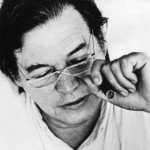
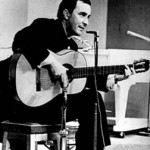
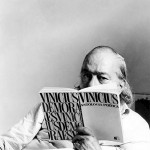
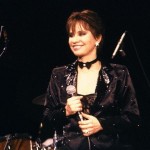
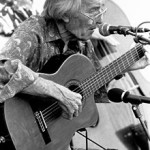


March 17th, 2011 at 1:09 pm
Funny how you relate it so much to jazz…
Jobim once said that “Beer had a greater influence on bossa then jazz ever did.”
March 17th, 2011 at 8:36 pm
Thanks for the comment…great quote! I don’t really say that Bossa nova was influenced by jazz–they both started in different places with different people, but they do share some similarities, and of course there was a lot of jazz and Bossa nova collaboration when it got more popular in the later 60’s.
January 8th, 2013 at 11:11 am
It is very interesting to me that no one who writes about the history of Bossa Nova, has had the historical breadth to co-relate the abrupt end of Bossa Nova with the USA motivated and supplied military coup of 1964 that through torture, murder, and intimidation oppressed Brazilian culture and freedom in general for 20 years.
http://en.wikipedia.org/wiki/1964_Brazilian_coup_d'état
and
http://www.gwu.edu/~nsarchiv/NSAEBB/NSAEBB118/index.htm
January 8th, 2013 at 11:29 am
Thanks for sharing this perspective. The purpose of the article isn’t so much a history, as it is a brief introduction to the music and some of the key musicians.